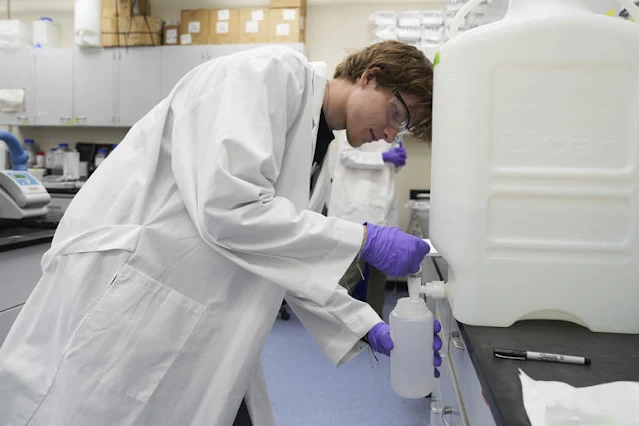The Biden administration has implemented stringent limits on certain persistent chemicals in drinking water, commonly known as “forever chemicals.” These limits will require utilities to reduce these chemicals to the lowest level that can be reliably measured. Officials estimate that this action will reduce exposure for around 100 million people and help prevent thousands of illnesses, including cancers. This rule marks the first national drinking water limit on toxic PFAS, or perfluoroalkyl and polyfluoroalkyl substances, which are known to be widespread and long-lasting in the environment.
Health advocates have commended the Environmental Protection Agency (EPA) for maintaining the tough limits proposed last year. However, water utilities have raised concerns, citing the expensive installation of treatment systems and the potential for increased costs to customers. Despite these challenges, the EPA views these new standards as crucial for enhancing the safety of tap water for millions of consumers, aligning with a priority of the Biden administration.
The EPA estimates that implementing the rule will cost approximately $1.5 billion annually but will lead to the prevention of nearly 10,000 deaths over several decades, significantly reducing serious illnesses. PFAS chemicals are known to be hazardous due to their persistent nature in the environment and are associated with health issues such as low birth weight, liver disease, and certain cancers.
The new rule sets strict limits on two common types of PFAS — PFOA and PFOS — at 4 parts per trillion, with three other types, including GenEx Chemicals, limited to 10 parts per trillion. Water providers will be required to test for these chemicals and inform the public if levels exceed the limits. The rule also addresses combinations of some PFAS types.
Despite these efforts, utility groups warn that the costs associated with these rules, estimated to be tens of billions of dollars, will disproportionately affect small communities with fewer resources. Legal challenges are expected to follow the implementation of these rules.
In conclusion, while the new rule represents a significant step towards reducing exposure to PFAS in drinking water, challenges remain in implementing the rule effectively, especially for smaller communities with limited resources.


